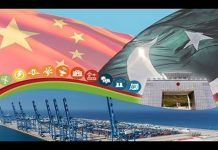Special Economic Zones (SEZs) are globally recognized as an engine for economic growth and development. Orthodox economic perspective views SEZs as “second best” and “Corner stone” strategy for economic growth and development. The increasing number of SEZs around the globe is the evidence of their substantial role in socio-economic development.
During the 1970s and 1980s many SEZs were established in Asia, particularly in East Asia and have played key role in catalyzing the economic growth. According to Asian Development Bank in 2011, the increase in number of SEZs in Asia can help to revive its sluggish economy, to move up in the value chainand to enhance the trade performance of China, Malaysia, Singapore, the Republic of Korea, Bangladesh, Sri-Lanka, Vietnam, India, Hong Kong, Indonesia, and Jordan shared some outstanding success stories from Asia.
Clearly defined objectives help to design focused Industrial Policy which should be aligned with national policy framework to maximize its impact. For instance, China has established SEZs as a laboratory to test the economic reforms and to attract FDI. Likewise, the UAE established SEZs as a tool for economic diversification; Vietnam used SEZs as a tool to attract FDI therefore this enabled both countries to transform their economies. Following the same footprints countries like Malaysia, Philippines and Indonesia used SEZs as a growth strategy. India has also positioned SEZs as the core element of her developmental strategy.
In line with changing economic structure, Pakistan has also prioritized nine SEZs under CPEC to be developed, backed by SEZ Act endorsed in 2012 and amended later in 2016 now named as SEZs (Amendment) Act 2016. The Act has clearly differentiated the SEZs from other type of zones and defined the SEZs development mechanism, incentives for developers and enterprises, role of related governing bodies and scope of delegated authorities and powers to provincial government and related bodies.
China has experienced remarkable economic growth by developing her SEZs. China employed 30 million of workforce in SEZs which is about 50% of the total employed workforce in SEZs around the globe attracted 46% of FDI and added 22% in her GDP growth. China successfully used SEZs for industrialization and follows the incremental approach which is; i) focused on inherent advantage and small industries; ii) setting up industries with advanced technology and; iii) step up for diversification. Furthermore it has made structural reforms to encourage the joint ventures coupled with private investment and decentralization of authority played a key role for successful SEZs’ development, but applying the same model did not bring the success as in case of India. For Pakistan with all her highs and lows has to design a policy that best suits with her situation and the focus should be on “how to develop SEZs and how to design a coherent industrial policy”? A well designed and well-structured policy will help to cope-up with the socio-economic challenges like unemployment, poverty, regional differences and income inequality.
Connectivity, supply of electricity and provision of other utilities are well placed on priority. Lack of complementary infrastructure is one of the major causes of SEZ failure in India. The success of the SEZs depends upon provision of power and the proximity to road, rail, sea and air ports, connecting the SEZs with national and international supply chain. It is very important to physically connect all the SEZs and to integrate in an existing supply chain to achieve the inclusive growth. China successfully positioned SEZs to establish the industrial clusters and backward linkages to support the domestic industries and ensured the technology transfer. Infrastructure availability and location are the key success factors for SEZs in China.
SEZ in FATA “Mohmand Marble City” and “Bostan Industrial Zone” in Baluchistan are creating doubts as these are proposed in low population density areas while rich in natural resources. A well-developed infrastructure around SEZs and in connected areas will support the labour mobility, especially the mobility of semi-skilled and skilled labour force. Urban development around such areas creates attraction for labour workforce to stay. The Shanzen SEZ is the example which turned from merely a fishing village with 30,000 population to a successful industrial zone.
Private investment (joint ventures/independent) should be encouraged through incentives to develop SEZs as private involvement in PPP mode or independently guaranteed the fair play, timely delivery, efficiency, professional expertise and innovation.
Being a developing country, Pakistan should focus on endowment based industries as economists suggested that for a developing nation, it is imperative to start those industries in which they have latent comparative advantage and abundant human skills and should be capitalized up to their maximum potential in initial phase of economic development. Following thrust sectors are proposed for the incentives such as leather, textile, food processing and marble for which we are abundant in natural resources and required labour force. To equip our labour force with required skills special arrangements should be made. A commendable effort has been made by the KP government which signed MoUs with China to establish vocational centers in SEZ surrounding areas. Educational institutions and industries also need to sit together to produce the workforce with required skills.
Keeping in view the contribution of service sectors in GDP, a special effort can be made to establish services specific economic zones particularly professional services with focus on financial, accounting, legal and construction.
Relationship with neighbouring countries needs to be harmonious especially for SEZs at the border areas. We have so many examples of cross border jointly developed SEZs to realize the dream of regionalintegration and inclusive growth. Mohmand Marble City, Maqpoondas, GB and Bostan in Baluchistan have great potential to build on this model.
Pakistan to make SEZs a big success, has offered incentives which should carefully be evaluated before their implementation because rightly designed incentives help not just to populate the SEZs but to develop successful SEZs. Export and value addition should be our focus for sustainable economic growth. China being the second largest buyer (second largest importer) is the big market to capture and an attraction for her trading partners to establish businesses in nine prioritized SEZs in Pakistan. That will minimize the cost of transportation as China is connected through road and sea with Pakistan. Documentation related procedures, one window shop and other facilitation services are also linked with SEZs success.
Efforts are also needed to make decisions about “the size and number of SEZs”, “which industries should be encouraged to establish in SEZs”? “Should SEZs constitute a mix of industries or design for specific industry or sector?”, “Can a uniform policy be applied to all SEZs whether it is in Karachi or in FATA/Maqpoondas, GB/Bostan, Baluchistan?” As it is believed that the far flung and under-developed areas with low population density seems less attractive to be considered for investment. And we also need to consider few questions as to how incentives for each type of industry can be a success factor? How to encourage PPP in SEZs? “How FTAs can be designed by keeping SEZs in focus along with human capital formation and development to meet the future needs”.
Published in Pakistan OBSERVER on August 23rd 2017

 中文
中文 Urdu
Urdu











